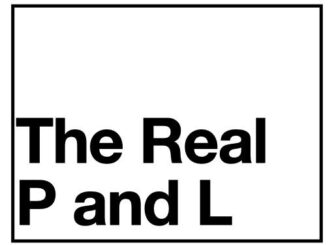Inspired by a MarketFoolery podcast from Chris Hill titled “Lessons from Lowcountry”, I had some lessons from my vacation to the Pacific Northwest. I rented a car with friends from Portland and drove south ending at the Redwoods in Northern California. Just like Chris, my mind always seems to go back to investing. It’s how I’m wired. Buckle up and get ready for analogies between investing and trees! This is not the first or last time these analogies will be made, but they were my takeaways.
Lesson 1 – Trees experience growth you don’t see
The Coastal Redwoods are the tallest species of trees. The tallest tree in the world, Hyperion, is a redwood standing at 380.1 feet. It’s impossible for me not to see the resemblance of investing in great companies is like the growth of a tree. My investment mindset is set for the long term. I’m thinking about 10-20 years into the future, not tomorrow or even a month from now. I attempt to invest in companies that are poised for sustained long-term growth.
With my mindset as an investor, I hope to buy the next Hyperion as early as possible and let it take me into retirement. Even if I’m not a shareholder from the very start, the long-term growth trumps all. So what if you get in when it was 100 feet tall and other trees were taller, it still ended on top. Capital appreciation takes time and is something I’m accounting for in my investing equation. I could bet all my life savings on a roulette spin, a hand of poker, or even a coin flip, but I don’t. I don’t want to take on the risk. It’s not my investment game.
A Coastal Redwood grows an average of 3-6 feet per year. Under suboptimal conditions, it might only grow an inch. The similarity of what I’m trying to do with my stock portfolio is too obvious. Hyperion is about 600 years old. I don’t plan on living that long, but I’m hoping to hold companies as they continue to grow in the long term.
Looking at these trees, you don’t see them growing, but they are. That is the slight difference between the growth of a tree and your portfolio. We can all see down to the decimal how our portfolio did for the day, but it isn’t as noticeable in trees. I would rather treat my portfolio like a tree where I check on it every once in a while to make sure it’s healthy and still growing but have an understanding that some years might not allow for substantive growth.
Lesson 2 – Stick with your winners
Redwoods can grow from four different sources: seeds, cuttings, stump sprouts, and root sprouts. The one that stuck with me the most was stump sprouts. This is when there is a tiny growth from an existing tree that grows into its own Redwood. One tree is on its way to becoming one of the largest in the world and it decides that it wants a partner for its journey.
I want to invest in trees that create other gargantuan trees from themselves. Take a look at Amazon, Microsoft, Google, and Facebook. From Amazon Web Services, to Xbox, to YouTube, to Instagram, all of these companies have lines of business that would be successful companies on their own. Some of these are created internally like Amazon and AWS or Microsoft with Xbox, while YouTube and Instagram were acquired.
There is an extra satisfaction if a company can create businesses organically, rather than acquiring them. Someone purchasing Amazon in the early to mid-2000s had no idea what was on the horizon with AWS. If you are able to identify an investment as a Redwood from the start, you have a good chance that a couple more might sprout up alongside your initial tree. That is what I’m trying to find with my investments.
Lesson 3 – Get close to see what something is made of
As most people do when in the Redwoods, I got up close to examine the trees when I noticed how the outer bark was formed. It consisted of very tiny layers of bark that stacked upon itself. This was a reminder to myself of how much goes into the makeup of a company.
It’s hard not to be amazed by the full picture of a redwood when you are several feet back. They tower over you like skyscrapers to a point where you aren’t able to see the top. Getting up close showed this amazing feat of nature was built one layer at a time over hundreds of years. Looking at the tree as a whole you don’t see the individual layers of bark, it’s only when you get up close.
I would like to think of the layers of bark as the people that make up a company. It’s so easy to look at the market cap of Amazon, Apple, Microsoft, etc., and be amazed by their enormity. Get a little closer and we can see there are people that have made the business what it is today. From finance, to HR, to facility management, to the executive teams, all of these people play a role in the larger picture, but it’s easy to forget when you have your jaw dropped to the ground trying to see the top.
Peace and Love.
Feel free to drop me a follow on Twitter @TheRealPandL
